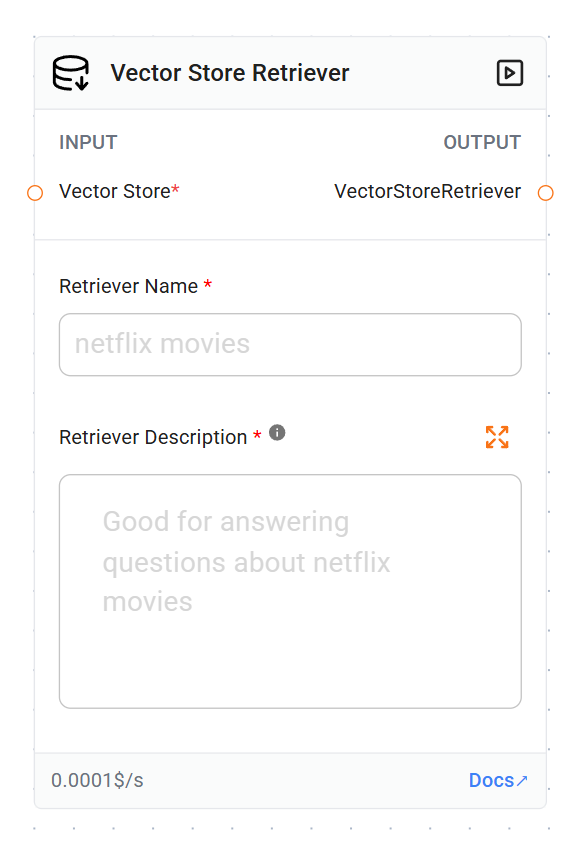Skip to main content
Node Details
-
Name: vectorStoreRetriever
-
Type: VectorStoreRetriever
-
Category: Retrievers
-
Version: 1.0
-
Vector Store
-
Label: Vector Store
-
Name: vectorStore
-
Type: VectorStore
-
Description: The vector store to be used as the basis for the retriever.
-
Retriever Name
-
Label: Retriever Name
-
Name: name
-
Type: string
-
Placeholder: “netflix movies”
-
Description: A unique identifier for the retriever.
-
Retriever Description
-
Label: Retriever Description
-
Name: description
-
Type: string
-
Rows: 3
-
Description: A brief explanation of when to use this specific vector store retriever.
-
Placeholder: “Good for answering questions about netflix movies”
Output
The node initializes and returns a VectorStoreRetriever object, which encapsulates:
-
The provided vector store
-
The specified name
-
The given description
Usage
This node is typically used in workflows where:
-
You have pre-processed data stored in a vector format.
-
You need to retrieve this data efficiently based on similarity searches.
-
You want to integrate this retrieval mechanism into a larger question-answering or information retrieval system.
Integration
The Vector Store Retriever is designed to work seamlessly with other components in a langchain-based system, particularly with MultiRetrievalQAChain for complex question-answering tasks that require querying multiple data sources.
Implementation Notes
-
The node uses the VectorStore class from ‘@langchain/core/vectorstores’.
-
It implements the INode interface, ensuring compatibility with the broader node-based architecture.
-
The init method is responsible for creating and returning the VectorStoreRetriever object based on the provided inputs.
Best Practices
-
Provide clear and descriptive names for your retrievers to easily identify them in complex workflows.
-
Use the description field to specify the domain or type of questions this retriever is best suited for.
-
Ensure that the vector store provided is properly initialized and contains relevant, high-quality data for optimal retrieval performance.


